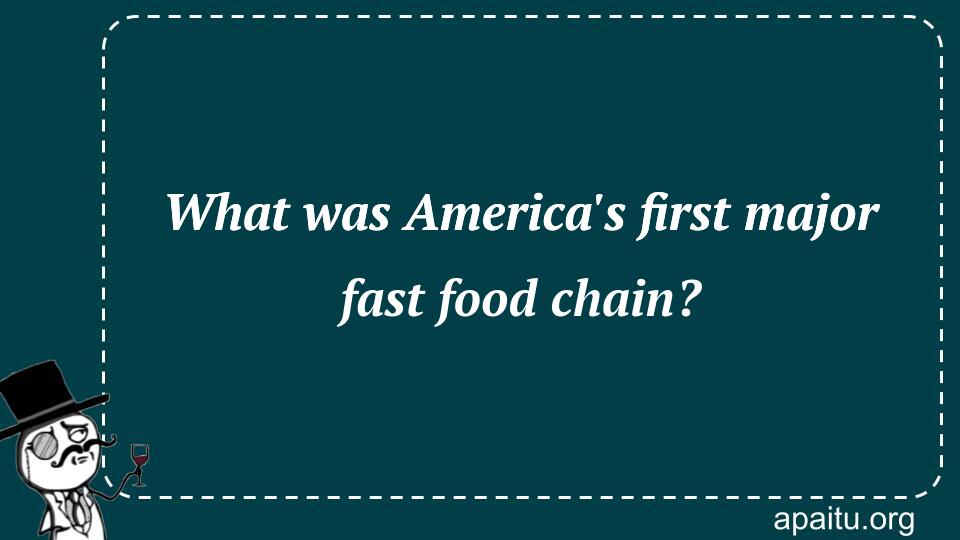Question
Here is the question : WHAT WAS AMERICA’S FIRST MAJOR FAST FOOD CHAIN?
Option
Here is the option for the question :
- McDonald’s
- Wendy’s
- White Castle
- Taco Bell
The Answer:
And, the answer for the the question is :
Explanation:
In a building that resembled a castle and was modeled after Chicago’s Water Tower, Bill Ingram launched a modest hamburger joint in Wichita in 1921. The restaurant, known as White Castle, later inspired America’s first significant fast-food business. Ingram needed to alter the public’s perspective of hamburgers, which were viewed as fatty and unhealthy, for the business to succeed. He collaborated with a medical student who agreed to consume nothing but Ingram’s hamburgers for a period of 13 weeks. After the 13-week internship, the student exhibited no signs of illness; as a result, Ingram widely disseminated this case study and White Castle’s business soared.

White Castle holds the distinction of being America’s first major fast food chain, pioneering the concept of quick-service dining and forever changing the culinary landscape of the nation. Established in 1921 in Wichita, Kansas, by Walter Anderson and Billy Ingram, White Castle introduced a revolutionary approach to food service that would shape the future of the industry. In this article, we delve into the history of White Castle, its impact on American culture, and its enduring legacy.
White Castle’s founding marked a significant departure from traditional dining establishments of the time. Faced with a growing demand for convenient and affordable meals, Anderson and Ingram devised a system that combined efficiency, consistency, and affordability. They introduced the concept of the “slider,” a small, square hamburger with a unique flavor profile, served on a signature bun. This innovative approach allowed for quick preparation, standardized quality, and affordable pricing—an irresistible combination for the busy, budget-conscious Americans of the 1920s.
The success of White Castle was not immediate, as the concept of fast food was still relatively new and untested. However, Anderson and Ingram’s unwavering commitment to quality, cleanliness, and customer satisfaction set the foundation for the chain’s growth. They implemented rigorous standards for food production and preparation, emphasizing cleanliness and hygiene—a practice that would later become a hallmark of the fast food industry as a whole.
One of the key factors contributing to White Castle’s success was its focus on consistency. The chain introduced a centralized commissary system, where all the food was prepared and then distributed to the individual restaurants. This allowed for strict control over the quality and taste of the sliders, ensuring that customers could expect the same delicious experience at any White Castle location they visited. This commitment to consistency built trust and loyalty among customers, establishing a strong foundation for the brand’s growth.
White Castle’s expansion accelerated in the 1930s when the chain began franchising its operations. This move allowed for rapid growth and the establishment of new locations across the country. By the end of the decade, White Castle had expanded its presence to several states, introducing its iconic white-and-green buildings that would become synonymous with the brand.
The rise of White Castle not only transformed the American dining experience but also had a significant impact on American culture. The chain’s affordable prices and quick service made dining out accessible to a broader segment of the population. It became a popular destination for families, couples, and individuals looking for a convenient and enjoyable meal. The distinctive architecture of White Castle buildings, often resembling small castles, became iconic in their own right, leaving a lasting impression on the urban landsc